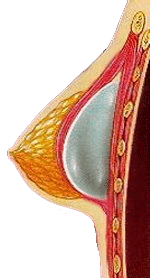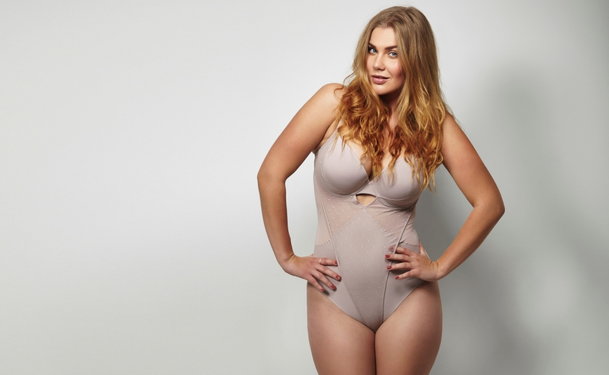Placement of your breast implant is important, especially when it comes to their appearance following surgery. But there are other things to consider as well.
About complete subpectoral (submuscular) implant placement
 |
Complete Submuscular - The top 2/3 of the breast implant is covered by the pectoralis muscle, and the bottom 1/3 is covered by the fascia. |
When discussing under the muscle placement with your surgeon, make sure he or she clarifies either PARTIAL or COMPLETE submuscular placement. Implants placed completely beneath the muscle are NOT totally behind the pectoral muscles. The top 2/3 of the implant is behind the pectoral muscles and serratus muscles, and the lower 1/3 is behind the fascia, which is the connective tissue that connects the pectoral, serratus, and upper rectus abdominal muscles. Having the implants completely beneath the pectoral muscles ALONE is not anatomically possible.
Complete sub-muscular placement can be achieved via the transaxillary, periareolar, or inframammary fold incisions. However, when going with the transaxillary incision, the muscles and fascia can be left in tact. They do not have to be cut or dissected in any way. This is not so with the periareolar and crease incision. With these two incisions, the muscle must be dissected in one way or another, in order to place the implant behind it. Of course, there is the method of simply cutting, and afterwards, it is closed up with sutures, or allowed to heal on it's own.
Pros of complete submuscular breast implant placement
- The implant is fully covered, by the muscle and fascia, which helps to camouflage the edges of the implant, as well as ripples in the implant. While visible rippling is possible with all three placements, having complete submuscular placement has the least risk of visible rippling.
- The fascia serves as support to the lower pole, whereas with partial sub-muscular placement, the skin tissues support the weight of the implant. Complete unders serve as sort of an "internal bra".
- Lower risk of capsular contracture.
- Better mammogram readings (vs. over the muscle implants)
- Lower risk of bottoming out.
Cons of complete submuscular breast implant placement
- More post-op discomfort.
- Breasts may sit a bit higher at first until the muscle relaxes (same is true with partial submuscular placement.)
- Implant distortion when the pectoral muscle is slightly flexed, which is also true with partial submuscular placement.
Reviewed By



